
FLUORIDE
Scope & Guideline
Advancing fluoride research for a healthier future.
Introduction
Aims and Scopes
- Health Implications of Fluoride Exposure:
Research on the adverse effects of fluoride on human health, including dental fluorosis, neurotoxicity, and thyroid function. Studies aim to elucidate the mechanisms underlying these effects and the implications for public health. - Environmental and Ecological Studies:
Investigations into the environmental impact of fluoride, including its accumulation in soil, water, and vegetation, and its effects on animal and plant health. This includes studies on fluoride contamination from industrial activities and its effects on ecosystems. - Preventive and Remedial Strategies:
Exploration of various preventive measures, including the effectiveness of fluoride varnishes, dental products, and alternative treatments for managing dental caries and fluorosis. This also includes research on natural remedies and their protective roles against fluoride toxicity. - Public Awareness and Policy Analysis:
Studies assessing public perceptions, knowledge, and attitudes towards fluoride use and community water fluoridation policies. This includes legal perspectives and recommendations for policy improvements to mitigate fluoride exposure. - Innovative Research and Technological Approaches:
Application of advanced methodologies, such as artificial intelligence and bioremediation techniques, to address fluoride-related challenges. This includes the development of new materials and approaches for fluoride detection and removal.
Trending and Emerging
- Neurotoxicity and Cognitive Effects of Fluoride:
Increasing focus on the neurotoxic effects of fluoride exposure, particularly concerning cognitive function in children and animal models. This trend highlights the need for understanding fluoride's impact on brain health and development. - Fluoride and Environmental Health:
A notable rise in studies examining the environmental consequences of fluoride, including its impact on soil, water sources, and biodiversity. This emerging theme emphasizes the ecological implications of fluoride exposure and contamination. - Public Health Policy and Community Perceptions:
Growing interest in assessing public awareness, attitudes, and legal frameworks surrounding fluoride use in community water systems. This theme reflects a broader societal engagement with fluoride issues and the importance of informed policy-making. - Natural Remedies and Alternative Treatments:
An increasing trend towards researching natural products and alternative therapies that mitigate fluoride toxicity. Studies focus on the protective effects of various botanicals and dietary supplements in countering fluoride's adverse impacts. - Innovative Technological Applications:
Emerging research utilizing advanced technologies, such as artificial intelligence and bioremediation, to address fluoride-related challenges. This trend indicates a shift towards integrating modern methodologies in fluoride research.
Declining or Waning
- Traditional Fluoride Applications in Dentistry:
There seems to be a waning interest in conventional fluoride treatments and varnishes as newer, alternative methods and materials are explored. Research is increasingly focused on non-fluoride options and their effectiveness in dental care. - General Toxicity Studies Without Specific Context:
Research that broadly addresses fluoride toxicity without a specific application or context appears to be declining. There is a shift towards more targeted studies that connect fluoride exposure to specific health outcomes or environmental impacts. - Historical Perspectives on Fluoride Use:
Studies focusing on historical accounts or retrospective analyses of fluoride use and its effects may be less frequent, as current research emphasizes contemporary issues and innovative solutions. - Single-Parameter Studies:
Research that examines fluoride effects in isolation, without considering multifactorial influences, is becoming less common. There is a trend towards comprehensive studies that consider the interaction of fluoride with other environmental or biological factors.
Similar Journals
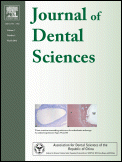
Journal of Dental Sciences
Connecting Researchers and Practitioners in DentistryThe Journal of Dental Sciences, published by Elsevier Taiwan, is a premier open-access journal that has been contributing significantly to the field of dentistry since its inception in 2009. With an E-ISSN of 2213-8862 and an impressive Scopus ranking of 26 out of 132 in the General Dentistry category, this journal occupies the top 80th percentile, highlighting its critical influence and reach among dental research. It has been consistently recognized as a Q1 journal in Dentistry (miscellaneous), making it a vital resource for researchers, professionals, and students alike. With a commitment to disseminating cutting-edge research and fostering scientific dialogue, the Journal of Dental Sciences encompasses a wide range of topics within dentistry, ensuring comprehensive coverage of both clinical and theoretical advancements in the field. As an open-access publication, it enhances accessibility, enabling a global audience to engage with and utilize the indispensable findings published within its pages. The journal continues to be an invaluable asset for those dedicated to advancing oral health and dental practices.
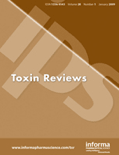
Toxin Reviews
Advancing the Science of ToxicologyToxin Reviews is a premier academic journal focused on the critical field of Toxicology, published by Taylor & Francis Inc. Established with an aim to foster research and disseminate knowledge, this journal has been pivotal since its inception in 1982 and continues to be a leading platform for both emerging and established researchers. With an impressive impact factor and ranked in the 75th percentile among its peers in the Scopus categories, it serves as an essential resource for scientists, practitioners, and students interested in understanding the complexities of toxins and their effects on health. The journal provides an Open Access platform, enhancing visibility and accessibility of research findings to a broader audience. Covering a wide scope, Toxin Reviews plays a vital role in bridging gaps between toxicological research and practical applications, ensuring that rigorous scientific inquiry translates into real-world solutions.
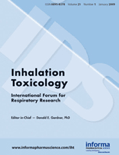
INHALATION TOXICOLOGY
Innovating Understanding of Toxic Responses to Inhalants.Inhalation Toxicology, published by Taylor & Francis Ltd, is a premier journal dedicated to advancing the field of toxicology with a particular focus on inhalation exposure and its impact on human health. Established in 1989, this journal provides a vital platform for original research, reviews, and case studies that explore the toxicological effects of inhaled substances, making it essential reading for researchers, health professionals, and regulatory scientists. With an Impact Factor that situates it in the Q3 category in both Health, Toxicology and Mutagenesis, the journal asserts its relevance within the scientific community, particularly emphasizing its contributions as indexed by Scopus rankings in related fields. Although it follows a traditional access model, the journal's commitment to delivering high-quality research continues to foster significant discussions and advancements in understanding inhalation toxicology. For those at the forefront of environmental science and pharmacology, Inhalation Toxicology is an indispensable resource for both current research and future innovations in the discipline.
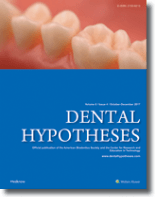
Dental Hypotheses
Fostering Collaboration in Dental InnovationDental Hypotheses is an esteemed open-access journal dedicated to the field of dentistry, published by Wolters Kluwer Medknow Publications. Operating since 2010, this journal aims to provide a platform for researchers, professionals, and students to share innovative ideas, theoretical frameworks, and emerging trends in dental science. With a current impact factor that reflects its specialized focus, Dental Hypotheses holds a Q4 ranking in the field of miscellaneous dentistry according to the 2023 category quartiles, positioning it as a growing contributor to general dentistry discourse. While holding a Scopus rank of #99 out of 132, with a 25th percentile, the journal welcomes submissions that push the boundaries of traditional dental research and offer fresh perspectives to current challenges. Through its commitment to open access, Dental Hypotheses increases the visibility of dental research, fostering collaboration and knowledge-sharing in the global academic community. Based in Mumbai, India, the journal's editorial board consists of leading experts in the field who ensure that all published research is rigorously vetted, maintaining high academic standards.

BULLETIN OF ENVIRONMENTAL CONTAMINATION AND TOXICOLOGY
Unveiling the impacts of toxins on ecosystems and society.BULLETIN OF ENVIRONMENTAL CONTAMINATION AND TOXICOLOGY, published by SPRINGER, is a pivotal journal in the fields of Environmental Science, Toxicology, and Public Health. With a strong history of dissemination since its inception in 1966, the journal predominantly focuses on the latest advances in understanding environmental contaminants and their toxicological effects on health and ecosystems. It currently holds a respectable Q2 ranking across multiple categories including Health, Toxicology and Mutagenesis, Medicine (miscellaneous), and Pollution, as per the 2023 metrics. While the journal is not Open Access, it provides an invaluable platform for researchers, professionals, and students seeking to contribute to and stay informed on critical issues regarding environmental hazards and their implications. With an engaged community of scholars and practitioners, this journal continues to be an essential resource for addressing the pressing challenges of environmental contamination and its health impacts, guiding future research and policy decisions.
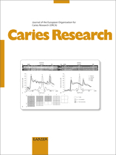
CARIES RESEARCH
Pioneering research in caries prevention and treatment.Caries Research is a leading academic journal dedicated to advancing the field of dentistry, specifically focusing on the study and prevention of dental caries. Published by KARGER in Switzerland, this esteemed journal has been a cornerstone of research since its inception in 1967 and will continue to disseminate critical findings through to 2024. With an impressive impact factor, it is ranked in the top quartile (Q1) of dentistry journals, specifically at rank #14 out of 132 in the General Dentistry category, reflecting its significant contribution and high visibility within the academic community. Although it does not currently offer open access, the journal is essential for dental researchers, practitioners, and students seeking the latest insights into caries prevention, diagnosis, and treatment methodologies. The journal's comprehensive scope encompasses clinical studies, laboratory research, and reviews, making it an invaluable resource for those devoted to improving oral health outcomes. For more information, please consult the publisher's website at KARGER in Basel, Switzerland.
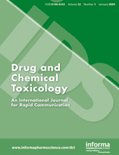
DRUG AND CHEMICAL TOXICOLOGY
Innovating research for a healthier tomorrow.Drug and Chemical Toxicology is a well-respected journal in the fields of toxicology, pharmacology, and public health, published by Taylor & Francis Ltd. Since its inception in 1978, this journal has diligently explored the effects and mechanisms of chemical exposures on health and the environment, fulfilling a crucial role in advancing scientific understanding and safeguarding public health. The journal is indexed across prestigious databases and features an impressive array of articles categorized within the Q2 and Q3 quartiles across various categories in 2023, reflecting its significance in Chemical Health and Safety as well as Environmental and Occupational Health disciplines. With an extensive reach and a focus on interdisciplinary research, Drug and Chemical Toxicology offers a rich repository of original research, reviews, and methodological advancements, catering to a diverse audience of researchers, professionals, and students dedicated to the betterment of safety and health standards. Although not an open-access publication, its articles are widely accessible to the academic community, ensuring that critical innovations and insights are shared for the greater good.
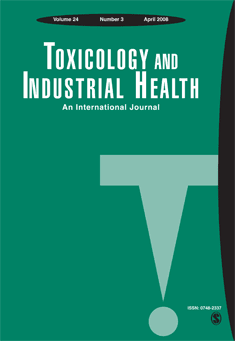
TOXICOLOGY AND INDUSTRIAL HEALTH
Fostering a safer tomorrow through comprehensive toxicology research.TOXICOLOGY AND INDUSTRIAL HEALTH, published by SAGE PUBLICATIONS INC, is a premier journal in the field of toxicology, public health, and environmental health, with a significant history dating back to 1985. With its ISSN 0748-2337 and E-ISSN 1477-0393, the journal provides a platform for disseminating groundbreaking research and comprehensive reviews that address the complexities of toxic substances in industrial and occupational settings. Despite its Q3 ranking among peers in health, toxicology, and public health, this journal is becoming increasingly influential, reflected in its growing citation metrics. Researchers and professionals benefit from its commitment to fostering knowledge in both theoretical and practical contexts, making it an essential resource for those dedicated to advancing understanding in this vital field. The journal's main objectives include promoting research addressing the implications of toxicology on health and safety standards across industries, ensuring accessibility to current studies for a global audience. Overall, TOXICOLOGY AND INDUSTRIAL HEALTH plays a critical role in bridging the gap between research and real-world applications, proving invaluable to students, professionals, and researchers alike in their pursuit of enhancing public health and environmental safety.

Environmental Health and Preventive Medicine
Pioneering solutions for a healthier planet.Environmental Health and Preventive Medicine is a leading, peer-reviewed journal published by the Japanese Society for Hygiene, dedicated to advancing the field of environmental health and preventive medicine. With an impressive Impact Factor and ranking within the top quintile (Q1) in both Medicine (miscellaneous) and Public Health, Environmental and Occupational Health categories, this journal is recognized for its high-quality research and significant contributions to public health discussions globally. Established in 1996 and transitioning to an Open Access model since 2008, it provides unrestricted access to important findings that serve a diverse audience, including researchers, practitioners, and students. The journal's scope encompasses a wide range of topics essential for understanding environmental health issues and formulating effective preventive strategies, making it an invaluable resource for anyone engaged in health policy, environmental science, or community health initiatives. With an active readership and impactful research, Environmental Health and Preventive Medicine continues to influence the future direction of public health and environmental policies.

Journal of International Society of Preventive and Community Dentistry
Elevating Standards in Preventive and Community Oral HealthJournal of International Society of Preventive and Community Dentistry, published by Wolters Kluwer Medknow Publications, stands as a leading voice in the field of preventive and community dentistry. With an ISSN of 2231-0762 and E-ISSN 2250-1002, this journal, based in India, has carved a niche for itself since its inception in 2011. It focuses on disseminating significant research findings, review articles, and advancements essential for enhancing public health through effective dental practices. Ranked in the Q2 category in the 2023 Dentistry quartiles and holding a notable position in the Scopus rankings (Rank #65 out of 132), the journal is particularly respected for its commitment to bridging knowledge gaps in general dentistry. Readers can access a wealth of information that promotes evidence-based preventive strategies and community engagement in oral health, making it an invaluable resource for researchers, dental professionals, and students alike. The journal continues to thrive, with a scope extending to the year 2024, promising insightful contributions essential for the development of the field.